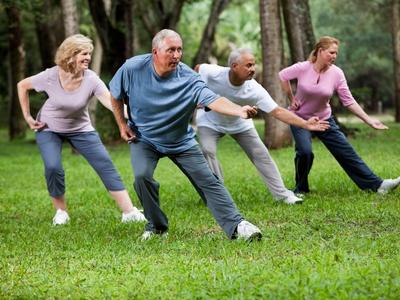After enjoying a delicious meal, we may be tempted to kick back and relax. However, emerging research suggests incorporating a brisk walk into your post-meal routine can offer numerous health benefits. From improved digestion to better blood sugar control, the advantages of walking after eating are backed by scientific evidence!
Enhanced Digestion:
One of the primary benefits of walking after eating is improved digestion. Physical activity helps stimulate the digestive system, encouraging the efficient breakdown of food. A study published in the "Journal of Gastrointestinal and Liver Diseases" found that post-meal walks accelerated the rate at which food moved through the stomach and intestines, reducing feelings of bloating and discomfort.1
Blood Sugar Regulation:
Walking after a meal may contribute to better blood sugar control, especially for individuals with or at risk of type 2 diabetes. A study in the "Diabetes Care" journal demonstrated that a short, 15-minute walk after each meal significantly lowered post-meal blood sugar levels in individuals with type 2 diabetes.2
Weight Management:
Incorporating walking into your post-meal routine may contribute to weight management. A study published in the "Journal of Physical Activity and Health" found that individuals who engaged in post-meal walks experienced reduced blood triglyceride levels, which are associated with improved metabolism and weight control.3
Mental Well-being:
Physical activity, including walking, has been linked to improved mood and reduced stress levels. Taking a short stroll after a meal can help combat feelings of lethargy and promote a sense of well-being. A review in the "British Journal of Sports Medicine" highlights the positive impact of physical activity on mental health.4

Sometimes, walking may not be an option, and that’s ok! The subtle strength of any low-impact exercise offers wonderful benefits and is accessible to individuals of all ages and fitness levels. Low-impact exercises such as using a rebounder or simply bouncing in place for 2 minutes can offer similar physical and mental health benefits!
The evidence supporting the benefits of walking after eating is compelling. From aiding digestion and regulating blood sugar to contributing to weight management and mental well-being, taking a post-meal stroll or even bouncing in place is a simple yet effective way to enhance overall health!
Incorporating this habit into your daily routine may lead to long-term positive outcomes, making it a small step with significant health rewards.
Sources
We are excited to announce our Tai Chi Classes are back!!! These classes will be taught by Grand Master Mingye Ding and Jenny-Marie Greenough, LAc.
Why Tai Chi? Tai Chi is a practice rooted in martial arts that teaches balance, relaxation, and mindfulness. Numerous studies have shown the health benefits of Tai Chi. In fact, Harvard Medical School wrote an entire book on the subject detailing the research findings and benefits of a regular tai chi practice. The only other practice that has been shown to slow signs of physical and mental aging, reduce the risk of falling, and increase general wellness as much is dancing! That’s right—not running, not golf, not swimming or cycling or weights…dance and Tai Chi are two of the best things you can do for your long-term health. And in many ways, Tai Chi is a dance—challenging us to be more fluid, rhythmic, and powerful in our movements.
Most studies on Tai Chi have been done using Yang-style Tai Chi, the most commonly practiced here in the US, but the benefits transcend the various Tai Chi forms. Grand Master Ding can teach Yang-style, but he is world famous for his mastery of Chen-style Tai Chi—in fact, he was featured on a stamp in China for his contribution to martial arts! Chen-style adds a dynamic of hip movements and alternating very slow movements with faster movements throughout the forms. There are several other styles of tai chi he may bring into our class as well as basic tai chi warm-up movements that are different from the typical “gym” warm-ups most of us are familiar with. Some days, we may practice a more healing-focused form of Tai Chi called Qigong as part of our warm-up for the form.

These forms can be adapted to all levels of ability—from seated-forms to gentle standing to dynamic and physically challenging, that will give even the most agile of athletes something to improve on! Each of the basic forms have associated sword forms, fan forms, and various ways to take the practice to new levels of understanding!
That is the beauty of Tai Chi—no matter where you start, there is a place to begin and a goal to pursue! I was so proud when I learned my first version of the Chen forms, so imagine my shock when Master Ding said “Good job, now we begin again!”; and we did, from the very first step, with a more nuanced exploration of each movement. Over the years we have begun again and again with the form—each time there is something to learn and I can’t wait to share this with all of you!
Follow Raja Wellness on Facebook and Instagram!
Follow Raja Goods on Instagram!